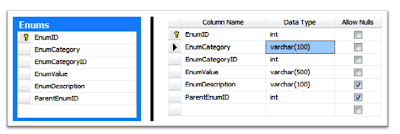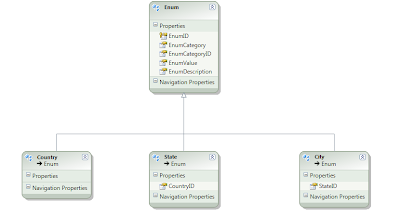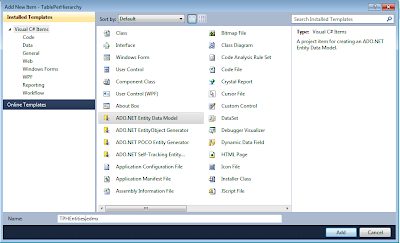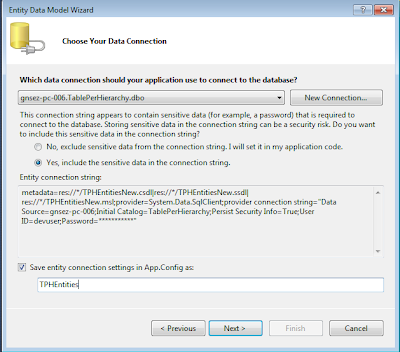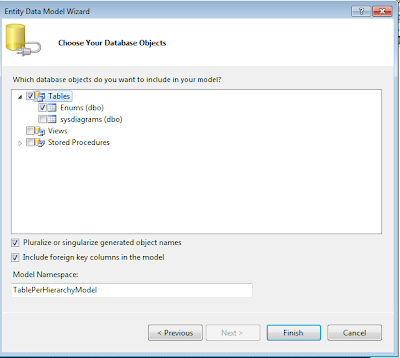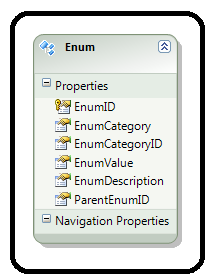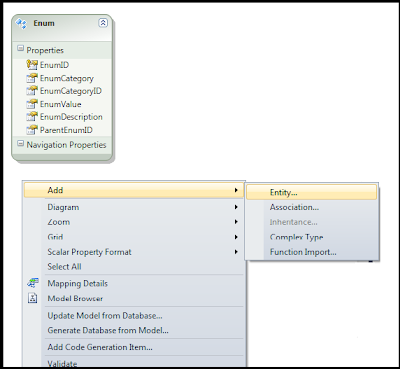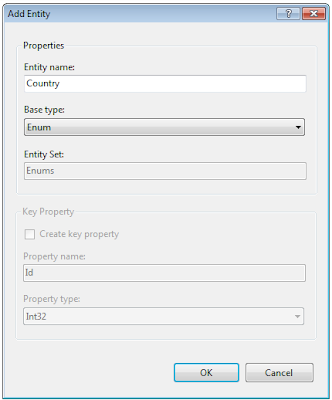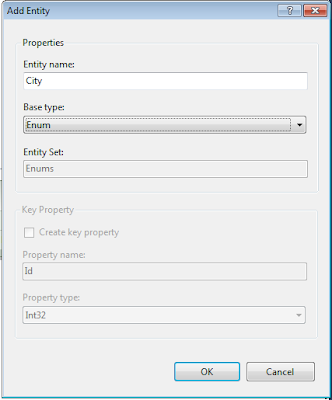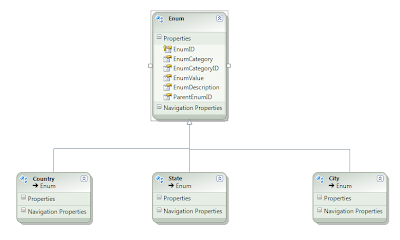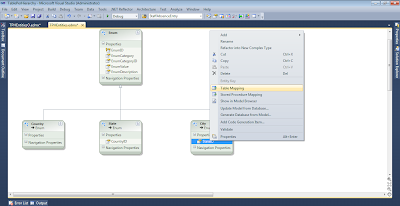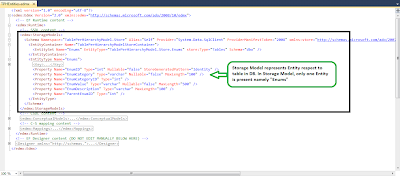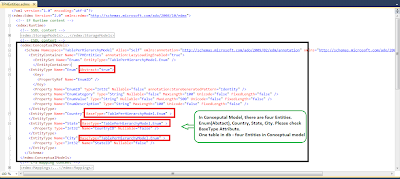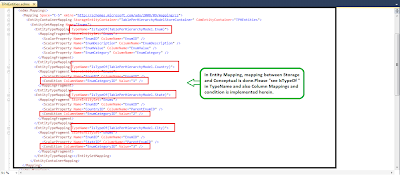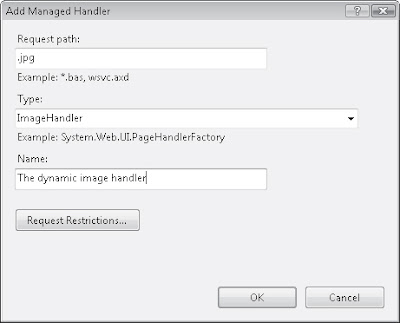Dear Friends,
In my previous post on Sharepoint 2010 platform, we discussed about Sharepoint 2010 platform, its architecture and advantages. Now, we will have detailed look on Sharepoint objects which as Sharepoint developers, we would be dealing with.


We will continue this series of Sharepoint development for beginners.
Thanks,
Paras Sanghani
In my previous post on Sharepoint 2010 platform, we discussed about Sharepoint 2010 platform, its architecture and advantages. Now, we will have detailed look on Sharepoint objects which as Sharepoint developers, we would be dealing with.
Figure: Sharepoint Server Architecture
- The SPFarm object is the highest object within the SharePoint Foundation object model hierarchy. The Servers property gets a collection representing all the servers in the deployment, and the Services property gets a collection representing all the services.
- Each SPServer object represents a physical server computer. The ServiceInstances property provides access to the set of individual service instances that run on the individual computer.
- Each SPService object represents a logical service installed in the server farm. Derived types of the SPService class include, for example, objects for Windows services, such as the timer service, search, the database service, etc. and also objects for Web services, such as the basic content publishing Web service which supports the Web applications.
- An SPWebService object provides access to configuration settings for a specific logical service or application. The WebApplications property gets the collection of Web applications that run the service.
- If the service implements the Service Application Framework of SharePoint Foundation, then it can be split into multiple configured farm-scoped instantiations (CFSIs). Each of these provides the functionality of the service but each has its own individual permission and provisioning settings.
- Each instance of a service, or a CFSI, that is running on a specific server is represented by an SPServiceInstance object.
- An SPDatabaseServiceInstance object represents a single instance of a database service running on the database server computer. The SPDatabaseServiceInstance class derives from the SPServiceInstance class and thus inherits the Service property, which provides access to the service or application that the instance implements. The Databases property gets the collection of content databases used in the service.
- Each SPWebApplication object represents a Web application hosted in an Internet Information Services (IIS) Web site. The SPWebApplication object provides access to credentials and other farm-wide application settings. The Sites property gets the collection of site collections within the Web application, and the ContentDatabases property gets the collection of content databases used in the Web application.
- An SPContentDatabase object inherits from the SPDatabase class and represents a database that contains user data for a Web application. The Sites property gets the collection of site collections for which the content database stores data, and the WebApplication property gets the parent Web application.
- An SPSiteCollection object represents the collection of site collections within the Web application.
Figure: Sharepoint site Architecture
1. Each SPSiteobject,
despite its singular name, represents a set of logically related SPWeb objects.
Such a set is commonly called a "site collection," but SPSite is not a
standard Microsoft .NET collection class, in contrast to SPWebCollection. Rather, it
has members that can be used to manage the site collection. The AllWebs property
provides access to the SPWebCollection object that represents the
collection of all Web sites within the site collection, including the top-level
site. The SPSite.OpenWebmethod of the
SPSite class
returns a specific Web site.
2. Each site
collection includes any number of SPWeb objects, and each object has members that can be used to manage a
site, including its template and theme, as well as to access files and folders
on the site. The Webs property returns an SPWebCollection object that represents all the
subsites of a specified site, and the Lists property returns an SPListCollection object that represents all the
lists in the site.
3. Each SPList object has
members that are used to manage the list or access items in the list. The GetItems method can
be used to perform queries that return specific items. The Fields property
returns an SPFieldCollection object that
represents all the fields, or columns, in the list, and the Items property
returns an SPListItemCollection object that
represents all the items, or rows, in the list.
4. Each SPField object has
members that contain settings for the field.
5. Each SPListItem object
represents a single row in the list.
Sharepoint 2010 Object
Hierarchy
Microsoft
SharePoint 2010 offers a highly structured server-side object model that makes
it easy to access objects that represent the various aspects of a SharePoint
Web site. From higher-level objects, you can drill down through the object
hierarchy to obtain the object that contains the members you need to use in
your code. These objects are listed below:
- SPFarm Objects
- SPServer Objects
- SPService Objects
- SPWebApplication Objects
- SPSite Objects
- SPWeb Objects
- SPList Objects
1.1 SPFarm Object
The
SPFarm object is the top level or root object in the hierarchy, which is
designed to interact with the configuration data store. It contains global settings
for all the servers, services, and solutions that are installed in a server
farm.
Its Servers property contains a
collection representing all the servers in the environment, and similarly the Services
property has a collection representing all the services.
You
can get the current top-level server farm object as follows:
SPFarm myFarm =
SPContext.Current.Site.WebApplication.Farm;
To
get a reference to either the server farm or the current physical server, you
can use the following static properties:
Microsoft.SharePoint.Administration.SPFarm.Local
or
Microsoft.SharePoint.Administration.SPServer.Local.
SPFarm myFarm = SPFarm.Local;
Microsoft.SharePoint.Administration.SPServer.Local.
SPFarm myFarm = SPFarm.Local;
“SPFarm.Local
provides the entry point to the current farm”
The
term physical object does not necessarily mean that the objects exist
separately on disk. SharePoint stores all objects in the content database. You
may consider a physical object as something that might exist (such as a server
machine) or that can be stored elsewhere (such as a file).
The
SPFarm class has three child classes:
- SPServer, which represents a single server within the farm;
- SPService, which gives access to the farm’s services; and
- SPSolution, which is used to deploy something to the farm.
SPFarm is closely related to the
configuration database. For instance, the “DisplayName” property of
the SPFarm object returns the name of the configuration database. Like many
other objects, SPFarm inherits from SPPersistedObject, which means the object’s
data is persisted in the configuration database. That’s the reason so many
objects have static properties returning useful information without any
visible connection to other objects. They simply pull the data from the
configuration database.
1.1 SPServer Object
Each
physical server computer is represented by an SPServer type. The ”ServiceInstances”
property provides access to the set of individual service instances that run on
the individual computers, each as an SPService type.
Typical
properties of an SPServer object are the IP address (Address
property) and the Role property.
Role returns an enumeration of type SPServerRole:
- Application: The server runs a web application.
- Invalid: The server has not yet registered any role in the configuration database.
- SingleServer: The server is the only server in the farm (also called single-server installation).
- WebFrontEnd: The server is a regular front-end server in the farm.
As
for SPFarm, the SPServer object has a static property, Local,
that represents the local machine:
SPServer
myserver = SPServer.Local;
Using
the constructor with a server’s address, you can instantiate any server’s
object from:
SPServer
myserver = new SPServer(“myfarm-dev64″);
SPServer’s
ServicesInstances property returns all its services. This includes SharePoint’s
Windows and web services.
1.2 SPService Object
Each
SPService object represents a logical service or application installed
in the server farm. A service object provides access to farm-wide settings
of the load-balanced service that a respective service instance implements.
Derived types of the SPService class include, for example, objects for
Windows services, such as the timer service, search, Microsoft SQL Server, the
database service, and objects for web services.
All
services have the SPService base class. The most confusing thing here is
that both Windows services and web services inherit from same base class.
Moreover,
the SharePoint-specific services, such as incoming e-mail, are in the same
class hierarchy. This is another class that inherits from SPPersistedObject,
ensuring persistence in the configuration database. The class provides members that
return the assigned and currently running jobs. Most services process jobs in a
queue. A service can have multiple instances. The Instances property
returns them, and the SPServiceInstance class defines the objects
representing an instance. An instance can be started or stopped.
Several
web services support features provided by the API as well. The major difference
is that web services can be used remotely. The API access is only possible
if the code is executed on the target machine. The internal services that
SharePoint provides can be configured in several ways. These services are:
- Web Application service
- Administration service
- Timer service
- Diagnostics service
- Central Administration service
- Search service
- Outgoing E-mail service
- Incoming E-mail service
- User Code service
- Database service
Front-end
servers usually run services such as the Web Application service. Application
servers with a dedicated function run the Search service, for instance.
Depending on the entire farm configuration, the services spread across the
farm. The criteria to let one or another service run on a specific
machine depend on the expected performance and physical capabilities of
the hardware. If you know that the Search service takes 80 percent of the
CPU power, then it would be unwise to locate it on the same machine as the
front-end server.
From
the class model perspective, the services structure has five specific variants:
- Windows services (SPWindowsService)
- Web services (SPWebService)
- Diagnostic services (SPDiagnosticService)
- Outgoing E-mail services (SPOutboundEmailService)
- Incoming E-mail services (SPIncomingEmailService)
All
these classes inherit from SPService. To investigate the current
configuration of all services within the farm, the following code snippet is helpful.
It consists of a small console application:
SPServiceCollection
services = SPFarm.Local.Services;
foreach (SPService service in services)
{
SPRunningJobCollection runningJobs = service.RunningJobs;
}
foreach (SPService service in services)
{
SPRunningJobCollection runningJobs = service.RunningJobs;
}
Services provide specific functions.
The execution can be scheduled by a job. A job can be launched by a
timer—either regularly (e.g., every 12 hours) or at a specific time (e.g., Monday
at 7:00 p.m.)—or triggered by an event. They execute either on one server
or on several servers on the farm, depending on
the purpose of the service.
the purpose of the service.
1.3 SPWebApplication Object
Each
SPWebApplication object represents a load-balanced web application based
on IIS. The SPWebApplication object provides access to credentials
and other server farm–wide application settings.
The
Sites property contains the collection of sites or site collections
within the web application, and the ContentDatabases property is a
collection of content databases used in the web application. The SPWebApplication
class replaces the obsolete SPVirtualServer class, but it can still be
helpful to think of an SPWebApplication object as a virtual server—that is, a
set of one or more physical servers that appear as a single server to
users.
The
top-level object, SPWebApplication, represents a whole application. Usually
this object is directly related to at least one content database.
SPWebApplication inherits from SPWebService, because an application is
treated internally like a service.
The
ContentDatabases property returns a collection of content database represented
by SPContentDatabase objects. Each web application is hosted in
IIS; hence, the IisSettings property gives convenient access to the
settings without needing a connection to IIS.
Similarly,
the ApplicationPool property gives access to the application pool.
SPWebApplication is another object that inherits
from SPPersistedObject, meaning that the object’s data is persisted
in the configuration database.
You
can get an SPWebApplication object by different methods. Within a
SharePoint application, you can use the current context:
SPWebApplication web =
SPContext.Current.Site.WebApplication;
From
anywhere else, such as a console application, use the following:
SPWebApplication web = new
SPSite(“http://myserver/site”).WebApplication;
You’ve
already learned that any request is handled by an ASP.NET application and
represented by an HttpApplication object. SharePoint has its own implementation,
SPHttpApplication, which is tightly coupled to SPWebApplication.
Each web application runs its own SPHttpApplication object. The
content stored with the features provided by a web application is held within
one or more content databases. Each database object has, along with the
web application object, references to one or more SPSite objects.
1.4 SPSite Object
An
SPSite object represents the collection of site collections within the
web application. The Item property or indexer gets a specified site collection
from the collection, and the Add method creates a site collection within
the collection.
Each
SPSite object, despite its singular name, represents a set of logically related
SPWeb objects. Such a set is commonly called a site collection, but SPSite
is not a typical collection class, like SPWebCollection. Instead, it has
members that can be used to manage the site collection.
The
AllWebs property provides access to the SPWebCollection object
that represents the collection of all web sites within the site collection,
including the top-level site. The Microsoft.SharePoint.SPSite.OpenWeb
method of the SPSite class returns a specific web site.
If
your application does not run inside the context of a SharePoint site, you have
to retrieve the Site object based on its URL:
SPSite mySiteCollection = new
SPSite(“AbsoluteURL”);
1.5 SPWeb Object
Each
site collection includes any number of SPWeb objects, and each object
has members that can be used to manage a site, including its template and
theme, as well as to access files and folders on the site. The Webs
property returns an SPWebCollection object that represents all the
subsites of a specified site, and the Lists property returns an SPListCollection
object that represents all the lists in the site.
To
return the top-level web site of the current site collection, use the RootWeb
property:
SPWeb topSite =
SPContext.Current.Site.RootWeb;
The SPContext
class does not limit you to getting the current object of any given type. You
can use the Microsoft.SharePoint.SPSite.AllWebs property to obtain a
reference to any other web site than the current one. The following code
returns the context of a specified site by using an indexer with the AllWebs
property:
SPWeb webSite =
SPContext.Current.Site.AllWebs["myOtherSite"];
1.6 SPList Object
Each
SPList
object has members that are used to manage the list or access items in the
list. The GetItems
method can be used to perform queries and retrieve items from the list. The Fields
property of an SPList
returns an SPFieldCollection
object that represents all the fields, or columns, in the list, and the Items
property returns an SPListItemCollection object that represents all the
items, or rows, in the list.
We will continue this series of Sharepoint development for beginners.
Thanks,
Paras Sanghani













